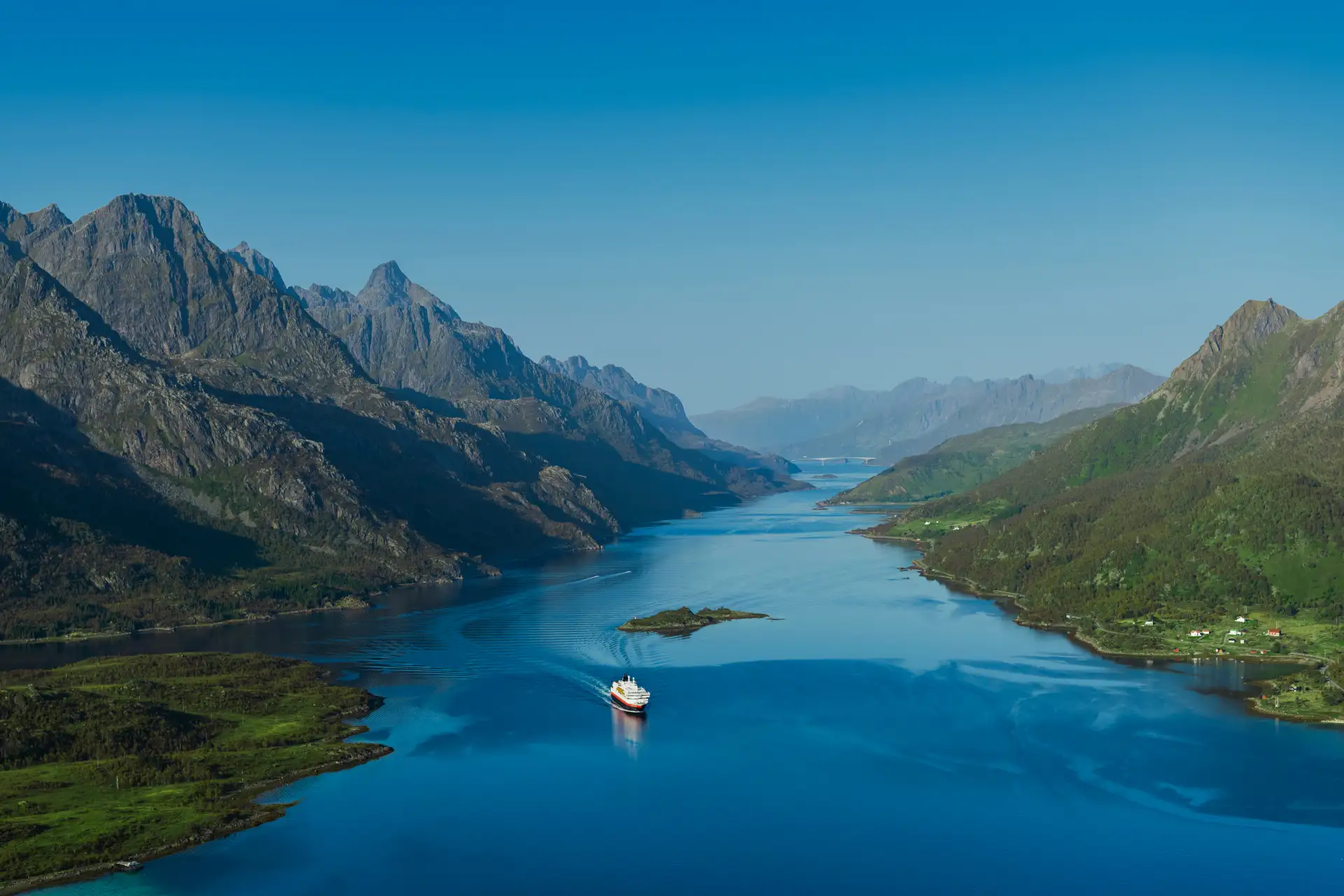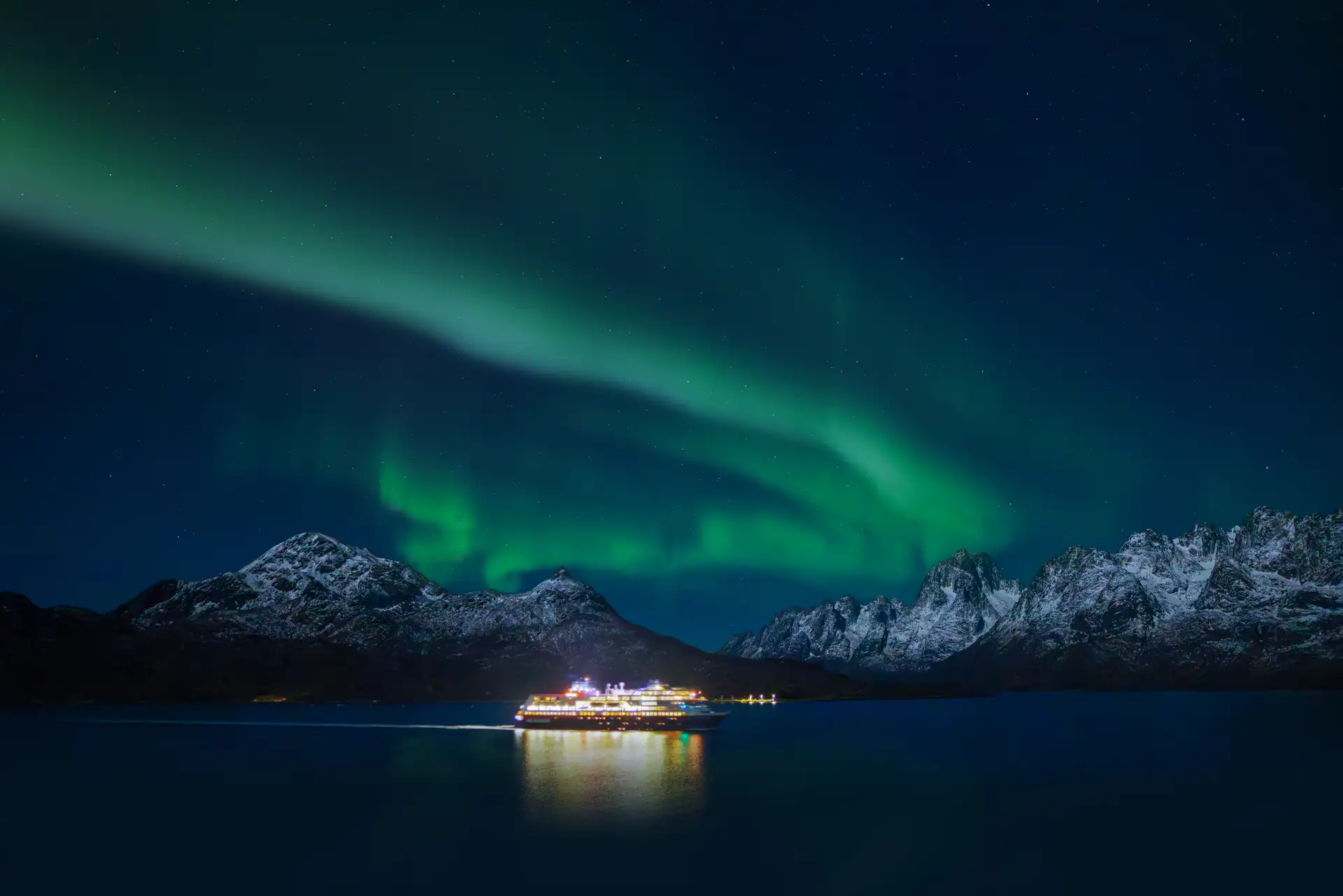A quick guide to Arctic astronomy
When you take a cruise in or near the Arctic Circle, you get a front-row seat to some of the sky's most exciting sights.

In the summer, visitors have the chance to see the Midnight Sun. This fascinating phenomena makes you acutely aware of the planet's movement. Apart from this period of constant sunshine, the Arctic Circle is the perfect place to catch a glimpse of the Northern Lights. There are few experiences quite like that of seeing these bands of colourful light move across the sky.
When it comes to arctic stargazing, winter is the best time of year. According to the European Southern Observatory, weather conditions in the arctic are stable during winter. This, along with the area's constant or near-constant darkness, makes for clear skies and the perfect opportunity to take in the majesty of the night sky. Here's a quick guide to the constellations you can see in the Arctic Circle.
Circumpolar Constellations
Some stars and constellations are visible all year. These are called "circumpolar" constellations, which means their position relative to the earth remains fairly unchanged year round. Probably the most famous circumpolar constellation is Ursa Minor.
The brightest star in this group is Polaris, also known as the North Star. This star is located almost exactly above the North Pole, and for centuries people have been using it to navigate. Other constellations you can see whenever it's dark include Draco, Cassiopeia, and Cepheus. You should be able to spot these constellations whenever you look north.
Seasonal Constellations
Other constellations can only be seen during certain times of year. Although winter is the best season for stargazing in the Arctic, you can still catch gorgeous views of the sky in spring, fall and even parts of summer. Here's an overview of some of these seasonal sights:
During spring, you can look straight up to see Cancer, the crab. As is the case with many constellations, you might need to use your imagination for this one - Cancer is made up of five stars that roughly make a "Y" shape. If you look south, you can find Hydra. This constellation snakes (pun intended) across the sky, and can most easily be found by looking for the stars that make up its head.
Most of the Arctic summer is spent in daylight, but there is some darkness for stargazing at the beginning and end of the season. During this time, you can catch a glimpse of Hercules and Lyra, both of which are located in the eastern part of the sky. You can find Hercules by searching for four stars that make a trapezoid, then connecting the dots to find the hero's arms and legs. Lyra is easy to spot once you've found Hercules - this constellation is just below Hercules's knee.
The Arctic Circle offers unique conditions that give you a chance to see the night sky in all its glory. Once you've spotted some of these constellations, tap into the spirit of constellation making and come up with some of your own. Fall brings Pegasus and Andromeda into the eastern sky. Find Pegasus by spotting the "Great Square," a roughly even square of stars in the sky. This square actually points to Andromeda - Earthsky.org recommends imagining that it's a baseball diamond, and looking at what would be third base. If you drew a line directly through that angle, you'd have a line that leads straight to the Andromeda Galaxy.
Since winter has such great stargazing conditions, it should be no problem at all to spot these cold-weather constellations. Orion is a particularly fun constellation to find, as it's fairly easy to see the shape of the constellation's subject. Start by looking toward the east and finding the three stars that make up the constellation's "belt." Once you've found the belt, you should be able to spot the other stars that make up Orion's torso and limbs. Follow along his left arm to find the bow and arrow. If you focus on his right arm instead, and then look just next to it, you'll see the bottom edge of Gemini. The twins are fairly easy to fill in, since the two lines are - as you'd imagine - pretty symmetrical.
The Arctic Circle offers unique conditions that give you a chance to see the night sky in all its glory. Once you've spotted some of these constellations, tap into the spirit of constellation making and come up with some of your own.


